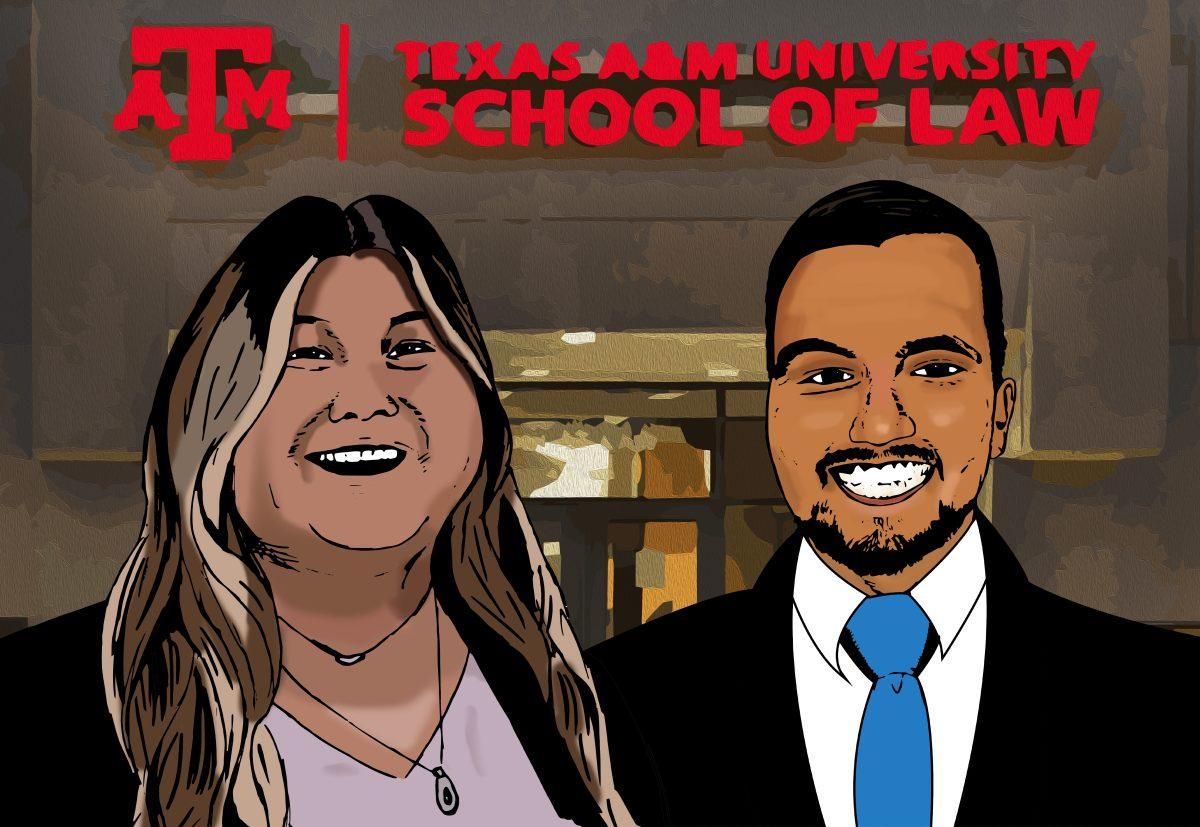Texas A&M’s School of Law welcomes its most diverse class yet.
36% of the 1L class identified as ethnically-diverse, according to the A&M School of Law Class of 2025 profile. This is a 3% increase from the Class of 2024. Third-year law student and President of Latinx Law Students Association, or LLSA, Gillermo Gomez hopes to see that reflected in the profession.
“I think the law profession is much less diverse than our law school,” Gomez said. “Which hopefully means that in the future, the law profession will reflect the generation of lawyers that are being trained right now.”
According to the 2022 ABA National Lawyer Population Survey, while the profession has trended towards more diversity, the law profession is still 81% white. Director of Admissions Jeff Green said he sees change on the horizon.
“Change has to start at admissions, in the law schools and other professions,” Green said. “I’m hopeful because I see firms that are making diversity a priority, but we have to have people in positions of hiring to make that adjustment.”
Green believes diversity goes beyond race and implicates notions of privilege.
“Students that have support both individually as well as financially have more opportunities to pursue additional degrees, to take the risk of what could be more debt,” Green said. “Students that don’t have that net have got to make decisions differently.”
Tiffany Tran, a second-year law student and social chair for the Asian-Pacific Islander Law Students Association, or APALSA, echoed similar sentiments.
“A lot of the people that I went to high school with don’t even have the resources to attend college, let alone professional school,” Tran said. “Poverty is a cycle. And when you don’t provide the necessary neighborhoods with the resources they need to get out of their situations, then there’s not an opportunity for them to go to professional school. They’re stuck.”
Gomez concurred, having struggled with being able to see himself in the profession. He grew up in an impoverished neighborhood in Fort Worth, where even college seemed far-fetched.
“I didn’t know any lawyers growing up, only on TV,” Gomez said. “Forget lawyers, I didn’t know anyone who had gone to college.”
Green further emphasized the importance of funding at the graduate level.
“A lot of it has to do with the federal funding, support like the Pell Grant is not available at the graduate school level,” Green said. “If there’s more federal funding available for grad school, that would change things.”
According to the Class of 2025 profile and ABA required disclosures, the School of Law has awarded 100% of students a scholarship in the past two years. This has allowed admissions to recruit high-caliber, diverse applicants who might otherwise choose elsewhere. It convinced Tran, a Texas Ex, to don the maroon.
“I won’t lie. Money was a big factor in me coming here,” Tran said. “So the diversity was kind of second to that. However, when I got here, I was very aware … I can count the number of Asian people on my hands. And that was concerning.”
Tran found community at the School of Law through APALSA.
“It really provided a very supportive community of people who have gone through the same thing as me,” Tran said. “Aneetta was APALSA president last year, and I think she really helped me get through that, in terms of like, it’s not just you that feels that way.”
Like Gomez and Tran, Green believes in the importance of affinity groups for student success.
“Our affinity groups that we have play a huge role,” Green said. “And not just your experience [and] success while you’re a student, but the connections with the graduates that are mentors in those roles from these organizations.”
Still, diversity at professional schools lag behind undergraduate demographics. College Station undergraduates were 43% ethnically-diverse last year, as opposed to the 33% at the law school in that same year, according to A&M’s student demographics and 2021’s ABA 509 report. Gomez, a Harvard graduate, noticed how law school was an even whiter space than his undergraduate institution.
“Harvard was more diverse than my law school experience has been,” Gomez said.
Green also advised students to look beyond the diversity of the student body when selecting law schools.
“As students are considering law schools, [don’t just] look at the race and ethnicity makeup of the student body, but the faculty,” Green said. “Diversity among your professors is a huge component of having the support and mentorship to help you succeed.”









